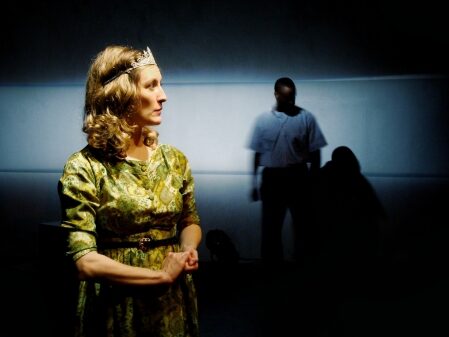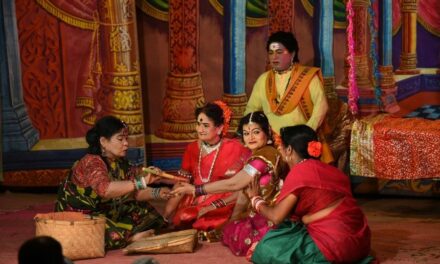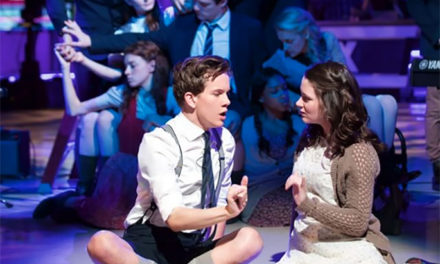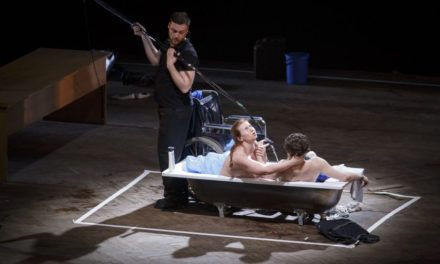There’s no denying that COVID-19 has been a financial and connectivity nightmare for artists. Theatre, in particular, thrives off of that human-to-human connection: it’s what brings in theatre lovers and theatre newbies alike, performance after performance, and allows artists in the theatre to make a living. With the majority of theatres worldwide closed to the public, both physical interaction and financial stability have been altered or, at worst, stopped entirely. It’s a frightening time for the theatrical community, as we search for support in a moment when simply living feels radical. There is no denying that very real fear.
However, COVID’s pause has brought one major positive into the theatre community: the focus on accessibility. I mean this in two ways. For one, COVID has put a lens on accessibility in the theatre, forcing privileged artists to confront how very inaccessible our art is to many communities. For another, COVID has made theatre that much more accessible to those same audiences, allowing for the realization that we could have been reaching out all along.
Theatre—as inherently political and accepting it is as a pure art form—has become something of an exclusive place. Monetary restrictions, for one, keep out many audience members and young artists that could otherwise be talented, devoted members of our community. The average price of a single Broadway ticket ranges from $116 for plays to nearly $300 for special performances: the 2013/2014 season was the first time average ticket prices rose above $100, and admission continues to climb. National tours are comparable. For those who get bitten by the theatre bug and want to pursue it as a career, average prices for a reputable conservatory training can be over $60,000 a year without financial aid (for reference, see Boston Conservatory at Berklee, Carnegie Mellon University, or Pace University as three examples). While, yes, there can be arguments made for some of this burden via payroll or materials or buying the rights to shows, the end cost is exorbitant. Few can afford to pay for the tickets or the training without being financially affected. I, as a firmly middle-class white woman with my own acknowledged privileges, cannot afford conservatory training without scholarships and loans, and seeing a non-community theatre production is still a treat for me. To people who are from less privileged backgrounds than I am, this is even more apparent.
The pause of this pandemic, in conjunction with the incredibly important Black Lives Matter movement, has allowed theatremakers to confront this head-on. We have heard countless members of our community speak out (Azudi’s article on our site, for instance), telling us, on the privileged side, exactly what their experiences are. The black community, the indigenous community, the POC community, the disabled community, the non-binary and transgender communities: during this time of both physical reprieve and intense movement, they’ve told us exactly what the problem is. Though we should have been listening and acting long before this moment, COVID has given us no choice but to listen. It has given us no choice but to consider how to change in the future and to lobby those above our paygrade who can incite and solidify said change. That is a beautifully uncomfortable thing, one that I hope continues long after a vaccine is found and the pandemic ended.
We’ve seen that this accessibility can be achieved, too. I have enjoyed and absorbed more live theatre during these last few months than I have in the last few years. Livestreams, live readings, prerecorded shows, creative multimedia presentations, podcast creations, and online talkbacks have allowed our community access to more art than ever before. Whether it be the Oregon Shakespeare Festival’s “Shows on O!”, Playbill’s streaming of new and old musicals alike, or the Corkscrew Theatre Festival’s corkscrew 4.0, the options are endless. I have seen more innovation, creativity, and accessibility than I have in my decade-plus of loving and engaging in theatre. I see more children, of all backgrounds, getting involved via Zoom classes and performances than I ever did in my years of non-profit community theatre work. Suddenly, COVID has opened the theatrical door to audiences typically underserved or ignored, whether intentional or not. Suddenly, one only has to have an internet connection (a privilege in and of itself, yes) and $10 to engage in this art, in this interaction, in this connection. That is a thing of beauty. It’s something that we, as a community, should focus on keeping more of as we leave this pandemic.
Theatremakers need to be paid for their art. We all have lives and families that need to be supported. As an artist and theatremaker myself, I completely understand. I am fearful of finding jobs and monetary support, too. However, I have seen how much COVID’s enforced pause has made us look upon accessibility, have witnessed firsthand how we’ve improved the playing field during this pandemic, how we’ve been forced to listen, learn, and confront our beloved industry. That is undeniably a positive brought about by so many negatives. It’s one we need to continue as we open back up.
Theatre is an art form that inherently welcomes everyone. Let’s make it that way. Let’s keep it that way.
This is only an overview of the accessibility problem. For more information on representation and accessibility in the theatre, you can begin by visiting:
“‘Access is a human right’: how deaf and disabled people are transforming theatre”
“Four Black Artists on How Racism Corrodes the Theater World”
This post was written by the author in their personal capacity.The opinions expressed in this article are the author’s own and do not reflect the view of The Theatre Times, their staff or collaborators.
This post was written by Rhiannon Ling.
The views expressed here belong to the author and do not necessarily reflect our views and opinions.


















